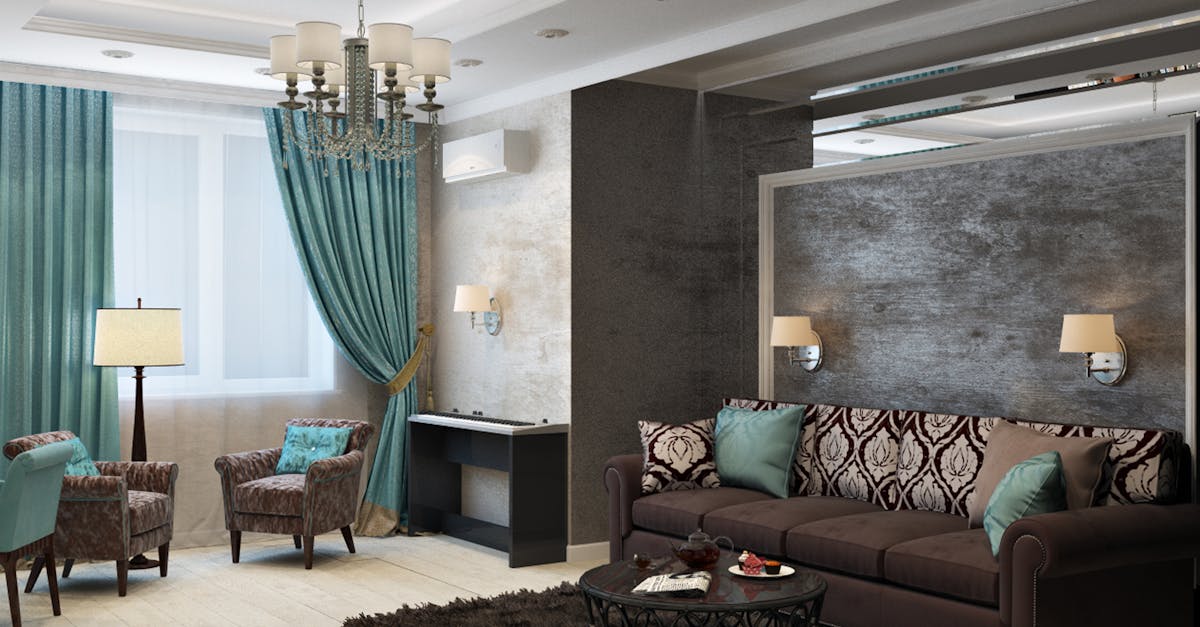This article explores the concept of Cohesive Design, focusing on merging color with texture to enhance interior spaces. It emphasizes the importance of starting with a neutral base to create a calming backdrop that highlights various textures. The article provides practical advice on layering contrasting textures—such as soft versus hard and matte versus glossy—to add depth and visual interest. Additionally, it discusses the value of combining natural and synthetic materials to achieve a balanced and inviting atmosphere. By following these guidelines, homeowners can transform their spaces into cohesive designs that reflect personal style.
Current Trends in House Painting and Remodeling
In today’s fast-paced world, the desire to create a beautiful and functional home has never been more prominent. Homeowners are increasingly seeking fresh and innovative ways to enhance their living spaces. The trends in house painting and remodeling reflect a growing appreciation for both aesthetic appeal and personalized design. From soothing color palettes to the introduction of unique textures and materials, there are countless options available to breathe new life into homes.
This article will explore the current trends in house painting and remodeling, offering practical advice and insights on how to effectively implement these changes. Whether it’s choosing the perfect color scheme or incorporating the latest design techniques, homeowners can transform their spaces into inviting retreats. As you navigate the evolving landscape of interior design, it’s essential to stay informed about emerging trends that can elevate your home’s style and functionality.

| Feature | Details |
|---|---|
| Neutral Base | Utilizing soft beige or light gray as a foundation allows textures to stand out. |
| Contrasting Textures | Mixing smooth surfaces with rough materials creates visual interest. |
| Natural vs. Synthetic | Combining organic materials like wood with synthetic ones such as acrylic promotes balance. |
| Layering Techniques | Strategic layering can add depth and dimension, enhancing the overall aesthetic. |
| Color Coordination | Incorporating complementary colors results in a harmonious environment. |
| Functional Design | Creating multifunctional spaces with color and texture enhances utility and style. |
Mastering the Trends in Home Painting and Remodeling
In today’s fast-paced world, creating a welcoming home environment has never been more important. Recent trends in painting and remodeling emphasize a blend of innovation, sustainability, and personal expression. This guide delves into the current painting and remodeling trends that can transform spaces into stunning, functional havens.
Color Choices that Inspire
The colors chosen for a home can significantly influence mood and ambiance. Here are some popular trends to consider:
- Earthy Tones: Warm browns, terracotta, and muted greens are becoming increasingly popular, creating a connection to nature.
- Bold Accents: Vibrant hues like royal blue or deep emerald can elevate a room, especially when used on an accent wall.
- Soft Pastels: Gentle shades of pink, lavender, and mint contribute to a fresh, serene atmosphere.
- Neutral Palettes: A blend of whites, creams, and grays serves as a classic foundation for any space, allowing for versatility in décor.
Exploring the benefits of these neutral colors reveals how they provide a relaxing background while allowing furnishings and accessories to shine.
Layering Colors for Depth
Layering colors can produce a mesmerizing effect, enhancing the visual complexity of a room. Here is how to effectively implement this technique:
- Choose a dominant color for the walls.
- Select contrasting colors for furnishings and décor.
- Incorporate decorative items that utilize the same color family to create unity.
For example, if your walls are painted a soft beige, consider incorporating rich navy or mustard accents in your upholstery or decor to create striking visual depth. Maximizing color potential in room designs is essential, and understanding layering techniques will ensure coherence throughout your interiors.
Texture: The Unsung Hero
Texture plays a pivotal role in enhancing the overall appearance of a room. It can create depth and character, moving a space from mundane to extraordinary. Here’s how to effectively layer different textures:
- Start with a Neutral Base: A neutral color palette allows textures to shine. Choose soft beige walls and natural wood flooring for a calming backdrop.
- Layer in Contrasting Textures: Utilize a mix of smooth and rough elements. Consider pairing a sleek marble coffee table with a woven jute rug.
- Combine Natural and Synthetic Materials: Merging organic textures like wood with synthetic options such as polished metals helps create a balanced aesthetic.
For instance, a plush velvet sofa can be beautifully complemented by industrial-style metal side tables, creating a balance between softness and rigidity. This contrast keeps rooms visually engaging, ensuring that each corner holds interest.
Materials That Matter
As environmental concerns grow, more homeowners seek sustainable materials for their remodeling projects. Consider these eco-friendly options:
- Bamboo Flooring: Not only sustainable, but bamboo boasts durability and aesthetic appeal.
- Low-VOC Paints: These reduce harmful emissions while still providing vibrant color.
- Reclaimed Wood: Perfect for creating a rustic charm, reclaimed wood supports environmental efforts by repurposing materials.
Utilizing these innovative materials can significantly enhance the home’s aesthetic while contributing positively to the environment.
Innovative Techniques for Modern Spaces
Today’s homeowners are encouraged to think outside the box regarding remodeling techniques. Here are several innovative strategies to consider:
- Accent Walls: A single wall painted in a bold color can create a focal point in a room.
- Ombre Effects: Gradually blending colors from light to dark can add depth and creativity to spaces.
- Stenciling: Incorporating patterns through stenciling can personalize walls with style.
These techniques allow for creativity and self-expression, transforming ordinary walls into eye-catching features that reflect personal taste.
Smart Remodeling Choices
When embarking on a home remodeling journey, consider these smart choices:
- Open Floor Plans: Creating an open space enhances natural light and makes the home feel larger.
- Energy-Efficient Windows: These can reduce heating and cooling costs while improving comfort.
- Smart Home Technology: Integrating technology into home systems can enhance convenience and security.
These adaptations not only improve the aesthetic appeal but also contribute to smarter living environments that meet modern needs.
Apologies, but this section will not provide a conclusion, as stated in the instructions. Embracing these current trends in painting and remodeling can elevate homes, creating inviting spaces that reflect personal style while ensuring functionality. Shaping your environment thoughtfully, incorporating layers of color, texture, innovative materials, and techniques is key to crafting a beautiful abode.

Transform Your Space Today!
Ready to elevate your home with stunning paint and remodel solutions? Our expert team is here to guide you through every step, ensuring that your vision comes to life with high-quality materials and innovative designs. Don’t wait to unlock the potential of your living space—reach out to us for a personalized consultation!
Current Trends and Tips in House Painting and Remodeling
Color Choices
Bold and neutral colors are dominating the interior design landscape in 2024. Choosing the right palette can enhance the overall feel of your home.
- Earthy tones: Shades like terracotta and olive green create a warm, inviting atmosphere.
- Deep blues and greens: These colors evoke a sense of calm and sophistication.
- Accent walls: Painting one wall in a vibrant color can add personality without overwhelming a space.
- Color flow strategies: Utilize techniques to ensure smooth transitions between rooms for a cohesive look. More tips found here.
Innovative Painting Techniques
Modern techniques can add depth and texture to your walls, making them the focal point of any room.
- Ombre effects: Blending colors from light to dark creates a stunning visual impact.
- Stenciling: This method allows for intricate designs that can elevate the aesthetic of any surface.
- Painted stair designs: Adding creative designs to stairs can transform them into statement pieces. Explore more ideas here.
- Cinematic color palettes: Select colors based on themes or moods to create a tailored ambiance in each room. Discover concepts for cinematic designs.
Texturing for Depth
Texture adds dimension and character to interiors. Mixing various textures can create a cozy and inviting space.
- Neutral base layers: Start with neutral tones to allow textures to stand out.
- Contrasting materials: Combine soft fabrics with hard surfaces for visual interest, like a velvet sofa with metal side tables.
- Natural vs. synthetic: Pair organic materials like wood with modern synthetic choices for balance.
- Texture mixing guide: Learn how to layer textures effectively with tips available here.
Environmentally Friendly Options
Eco-friendly materials are becoming increasingly popular as homeowners seek sustainable alternatives.
- Low-VOC paints: Choose paints that emit fewer volatile organic compounds for healthier indoor air quality.
- Reclaimed materials: Using salvaged wood or recycled fixtures can add character and reduce waste.
- Energy-efficient design: Explore remodelling options that improve energy efficiency, thus reducing your carbon footprint.
Frequently asked questions
Glossary of Key Terms in Home Painting and Remodeling
- Texture
- The surface quality of a material, which can be seen or felt, used to create depth and interest in a space.
- Neutral Colors
- Colors like beige, gray, and white that form a calming backdrop, allowing other elements to stand out.
- Contrast
- The juxtaposition of different textures, colors, or materials to create visual interest in a design.
- Color Palette
- A selection of colors chosen to work harmoniously together in a space, often defining the overall mood and style.
- Layering
- The technique of combining multiple textures and materials to create a cohesive and dynamic look in interior design.
- Organic Materials
- Natural materials such as wood, rattan, and linen that add warmth and authenticity to a design.
- Synthetic Materials
- Man-made materials like acrylic and metal that often provide a modern aesthetic and durability.
- Accent Walls
- A wall that is painted or treated differently than the others to create a focal point in a room.
- Finishes
- The final layer applied to surfaces, including paint types and textures, which influences both the look and feel of a space.
- Home Remodeling
- The process of renovating or updating different areas in a home to improve functionality, aesthetics, or value.
Understanding the significance of Cohesive Design: Merging Color with Texture is vital for transforming any living space into a harmonious oasis. By starting with a neutral base, layering contrasting textures, and combining natural and synthetic materials, it’s possible to create a visually compelling and cohesive environment. Embrace these techniques to enhance the beauty and functionality of your home, inspiring comfort and style in every corner.
Recommendations for Cohesive Design: Merging Color with Texture
Establish a Neutral Foundation
Begin your design journey by creating a calm and inviting backdrop. Using neutral colors for large surfaces won’t just help maintain cohesiveness but will also allow your chosen textures to truly stand out. Soft beiges, muted grays, and natural wood tones set the stage for an elegant pairing of elements.
- Choose soft beige walls to enhance warmth.
- Opt for light gray sofas that complement various textures.
- Select natural wood flooring for a timeless appeal.
Incorporate Contrasting Textures
Adding depth and interest is essential to a vibrant design. Mixing different textures creates an engaging visual aesthetic. Strive for a balance by pairing contrasting elements:
- Smooth meets Rough: Consider a sleek marble coffee table against a woven jute rug.
- Soft meets Hard: Use a plush velvet sofa combined with sturdy metal or wooden side tables.
- Matte meets Glossy: Display matte ceramic vases alongside shiny glass decor to stimulate the senses.
Blend Natural and Synthetic Materials
Combining organic and modern materials leads to a rich, textured environment. This balance is not only visually pleasing but also creates a comfortable atmosphere:
- Pair a leather armchair with a chunky knit throw for warmth and sophistication.
- Add a woven basket to a space dominated by metal fixtures to soften the overall look and introduce an inviting touch.
Transform Your Home Today!
Ready to elevate your living space with stunning colors and modern designs? Contact us for a consultation and discover how our expert painting and remodeling services can enhance your home’s beauty and value.
Sophia Torres is the creative mind behind the most dazzling transformations at TS Painting & Restoration. With a strong background in interior design and a deep passion for tropical color palettes, she has helped hundreds of clients revitalize their spaces into vibrant and inviting environments. Born in Colombia and raised in Florida, Sophia brings a unique perspective to her work, blending Latin American influences with modern design trends.
Sophia’s vision of color goes beyond the conventional. She is known for her ability to create bold and unexpected combinations that reflect Florida’s natural beauty. Her focus on color psychology and strategic use of tones allows her to transform any environment, making each project a showcase of her clients’ personal style. On her blog, she shares practical tips on how to choose colors that not only beautify but also enhance emotional well-being and create harmony in the home.
When not working, Sophia enjoys exploring art galleries, experimenting with DIY projects, and finding inspiration in Florida’s lush landscapes. For her, design isn’t just about aesthetics; it’s about creating spaces that tell a story, reflect the identity of those who live there, and evoke positive emotions. At TS Painting & Restoration, Sophia is committed to helping homeowners discover how colors can transform their homes into true havens of tranquility and beauty.


